 Leading Blog | Posts by Month |
 Leading Blog | Posts by Month |
03.31.23

LeadershipNow 140: March 2023 Compilation
See more on
Posted by Michael McKinney at 07:17 AM
03.30.23

Leading Thoughts for March 30, 2023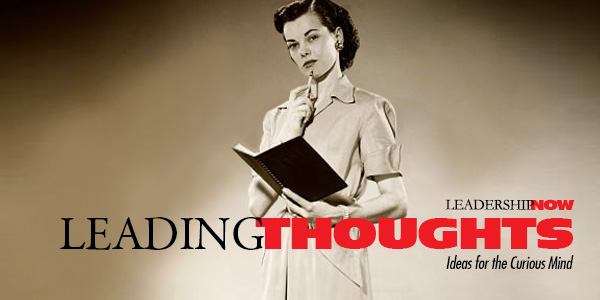
IDEAS shared have the power to expand perspectives, change thinking, and move lives. Here are two ideas for the curious mind to engage with: Will Marré on making choices based on our outer identity: “Instead of making authentic choices, we make choices based on the part we’re playing. Our lives are dictated, to a large degree, by what we think we must do to remain members in good standing of whatever club we have decided to join.” Source: Save the World and Still Be Home for Dinner John Baird and Ed Sullivan on what could derail you: “It is crucial for leaders to be very clear about what their values mean in practice. Transparency can be conflated with having no privacy. Honesty can be conflated with oversharing. And inclusion can be conflated with consensus.” Source: Leading with Heart: Five Conversations That Unlock Creativity, Purpose, and Results Look for these ideas every Thursday on the Leading Blog. Find more ideas on the LeadingThoughts index.
Posted by Michael McKinney at 06:59 AM
03.27.23

How to Enhance Involvement by Younger Generations in the Family Enterprise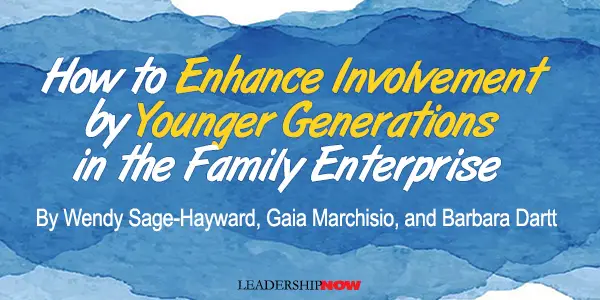
YOUNG ADULTHOOD today is a challenging life stage. It is rife with struggles related to managing the emerging responsibilities of adult life. If ownership or management of a family enterprise is an expectation, the pressures only mount. Family enterprise ownership requires deep commitment and responsibility. To effectively step into the role, it takes a great deal of emotional maturity, interpersonal skillfulness, and an understanding of an owner’s role and responsibilities. Unmanaged expectations on the part of the present owners toward the rising generation could result in a breakdown in family relationships and potentially spell doom for the family business. Expectations run high when a family looks to its young members to take the necessary steps to assume leadership and/or ownership of the family enterprise. Those in the emerging adult stage (ages 18 to 28) are in a critical time for ownership development. Yet they’re also in the throes of developmental changes that include learning to become independent from their family — both in proximity and with relation to financial dependency. Some may want to pursue a career separate from the family enterprise, while some who join the family business may feel an extra level of intensity around performance expectations. It’s normal for young adults to wish to forge their own paths during this stage. Older family members must create space for connections and learning while enabling emerging adults to explore and express their independence. It is important to help them understand that the door to involvement in the enterprise is open and that there are many paths to contribution. Importantly, given the social and cultural context of business today, it can be particularly challenging for members who fall into Millennial (born 1981-1996) or iGen cohorts (born 1997-2012) to step into an established family enterprise. Millennials, for example, are observed to prefer jobs that make a difference over those that provide a large salary, and their iGen counterparts show less interest or movement toward independence. Contrast what these generations face with that of Baby Boomer patriarchs or matriarchs (born 1946-1964) who are all about action and who expect their children and grandchildren to want to be just like them. They may look down on their Millennial family members who prefer a more balanced life. Development of these emerging adults as enterprise owners needs to be approached with empathy and thoughtfulness. For the multigenerational family enterprise to thrive, owners and managers need to be open to co-creating the future while recognizing the different values, aspirations, and goals between the Baby Boomer, Gen X, Millennial, and iGen cohorts. This entails: 1. Building and maintaining a strong family dynamic. Too often, senior generations move into ownership development without recognizing that a strong emotional environment in the family is a necessary foundation. This includes having values-driven behavior, open communication, constructive expression of emotion, appreciation for the diversity of skills and interests, and so on. Families need to aim for positive family experiences that help members form a sense of “together, we are stronger.” This can occur by sharing stories about individual members who live the family’s values. However, this involves showcasing a diverse set of values, including ones that cross generations so as to promote a feeling of inclusiveness and respect. One family professionally designed “family trading cards” similar to those popular in sports, creating experience across generations. 2. Becoming a learning family. A learning family proactively designs learning opportunities to advance both individual talent and the collective brain trust. It begins with a commitment by individuals to manage their biases as they experiment, take risks, and try new ways of doing things without fear of reprisal or getting it wrong. Family members give and receive feedback openly and constructively. While learning is considered a continuous process, a tangible goal is the ability to trust one another and communicate and collaborate for the long term. 3. Making learning a two-way street. It is useful if both older and younger family members are willing to allow the sharing of wisdom and create space to learn from each generation’s values. The senior generation may need to develop new skills to better share its wisdom and legacy and to give the next generation space to grow and become confident and capable as the “new guard.” 4. Marrying passions with business issues. Engaging family members in learning is more of an art than a science. It requires patiently exploring areas of individual interest and passion and marrying those with business needs and priorities — ideally in creative ways. One family involved in the pet products industry engaged members of the rising generation who loved cooking by setting up a cooking class with a specialist to develop dog and cat food recipes. It was a huge hit! 5. Respecting diverse viewpoints. Members of family enterprises are often dispersed and diverse in multiple dimensions — including age, gender, geography, knowledge, abilities, values, interests, and family roles. Placing value on the diverse set of collective learning styles and intelligences in the family not only cultivates inclusiveness but also potentially offers ways of thinking and doing things that, through synergy, may amplify your competitive advantage. This involves respecting others’ opinions and seeking common ground without forcing one single preference or perspective on other members. Seeking consensus (not unanimity) through fair process yields greater commitment and engagement over the long term.  
Posted by Michael McKinney at 07:54 AM
03.24.23

Automatic Influence: How Your Perception Influences Everything You Do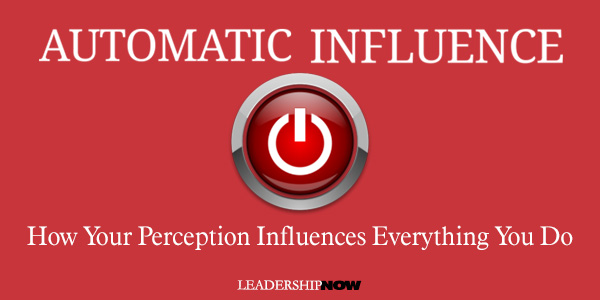
IT ALL STARTS with perception. Everything we feel, every choice we make, and everything we do all starts with our perception of our environment. Our perceptions automatically influence our feeling, and they in turn, automatically influence our actions. Perception is powerful. Erik Van Alstine takes us through the various ways the See-Feel-Act Progression influences everything we do in Automatic Influence: New Power for Change in Work and Life.
When trying to change, we need to get to the root of the problem—our perception. “Change is hard. But when we change the way we see, we strike at the root, automatically influencing emotion and behavior.” The secret to automatic influence is to start with perception. Perception is the power button. One click changes emotion, behaviors and, ultimately, the outcome of our lives. At the same time, our perception is a bit unruly. Our perceptions are prone to error. It isn’t as straightforward as just seeing. “Perception is a combination of feeds from reality and imagination” —our inner and outer worlds. We just think we are seeing things as they really are. When we see wrong, we feel wrong, and then we act wrong.
When we start seeing how blind we are, it changes things. We take time to listen, to clarify, to understand. We don’t just listen to be polite. We listen because we want to. We know that we’re making assumptions and mistaking them for facts, and without double-checks and outside help, we’ll make critical mistakes. As leaders, we need to love and care for those we steward—especially those who are different from us. Our perception of others is what triggers that feeling and behavior in us. What triggers love? “Seeing people are people, of equal value and with equal needs as ourselves. Love is the automatic response to seeing people right. When we see people as they are, we feel love and are motivated to serve people instead of using people or ignore people.” We naturally seek the maximum good in our lives. That is, the best we can have given the circumstances we perceive. That leaves us wide open to do bad. For the most part, evil leaders—bad characters—are doing what seems right to them based on the reality they see. We all pursue the maximum good as we see it. “It means people can see wrong and feel wrong and act wrong in response, all the while believing they are seeing right, feeling right, and doing right.” Doing wrong can feel right. We deceive ourselves. Our choices and our need to justify those choices create biases. The long-term effect of that is that we “carry those biases forward to the next situation. Years later, that bias might still be guiding us. Which means there could be hundreds of bad beliefs boxed up in the basement of our minds, distorting the way we see and creating automatic evil.” What do we do? We need to carefully manage our attention. Stay focused on the right things. Widen our perception through constructive feedback. Our minds filter what we see. We don’t see everything. There is our perceived reality and our ignored reality. As a result, “there’s a really good chance that we’re seeing the wrong things, that our way of seeing is sabotaging our highest and best, because we don’t have the right information.” Or we choose to ignore it. Another way is to abandon happiness as a goal in our life. “Happiness is a secondary and subjective reality that can lure us into thinking we see right when we aren’t.” We can be happy about the wrong things because of how we see a situation in our life. Happiness is driven by the way we see. It comes in the feel stage of the progression. Our emotions, too, can affect our perception. “Perception is the initial trigger of emotion. But emotion can have a powerful influence on the way we see things next.” So too, with our behaviors. They too can influence the way we see things next.
When intervening in situations with others, it is wise to remember the See-Feel-Act Progression. People change for reasons that seem right to them, not you. By asking questions, we can help others build an effective case for maximum good from their perspective. By asking questions, we may guide them through their perceptions and outcomes, as they see it, we can connect them to shared goals. Van Alstine describes how the way we see automatically influences humility, love, happiness, and energy. Our attitudes, too, are a matter of perception. “An attitude is a pattern of emotion driven by a pattern of perception. Perception is the power source, automatically influencing our attitudes.” The better we understand the See-Feel-Act Progression, the quicker we can sort out our emotional and motivational lives. And better influence the lives of others for good. 
Posted by Michael McKinney at 07:05 AM
03.23.23

Leading Thoughts for March 23, 2023
IDEAS shared have the power to expand perspectives, change thinking, and move lives. Here are two ideas for the curious mind to engage with: Bob Chapman, Chairman and CEO of Barry-Wehmiller, on developing human potential: “When somebody comes into our organization and agrees to join us, when we invite them into our organization, we become stewards of that life, just as we are when a child comes into our life. A different level of intensity but the same concept. And the way we treat that person who joins our organization will profoundly affect that person’s marriage and the way that person raises their children and interacts with our community.” Source: The Lean CEO: Leading the Way to World-Class Excellence Former president of Florida Hospital’s Central Region, Brian Paradis on the hero leader: “Our society has a case of the hero leader. We admire a strong leader. Even if we fear them, we believe they will get things done. He or she will have a direction and we won’t flounder. The responsibility for success rests with them, not us, so we don’t have to be accountable. This is seductive but it does not hold up under scrutiny. There is a long list of organizational and personal failure under this brand of leader.” Source: Lead with Imagination Look for these ideas every Thursday on the Leading Blog. Find more ideas on the LeadingThoughts index.
Posted by Michael McKinney at 07:19 AM
03.20.23

Culture is the Way: 5 Steps to Building a World-Class Culture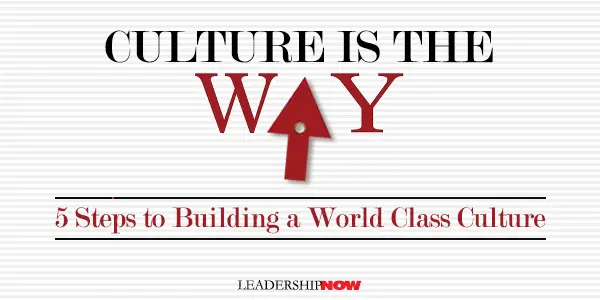
YOU CAN CHANGE the results your organization is getting by changing its culture. And every organization has a culture whether it is by design or by default. “Whether an organization has a world-class culture or a toxic one, its future depends on how much attention and focus it puts on growing its culture,” writes Matt Mayberry, the author of Culture is the Way: How Leaders at Every Level Build an Organization for Speed, Impact, and Excellence. Culture serves as the internal compass for an organization’s fundamental beliefs, how the organization behaves daily, and its level of market performance. To begin, let’s look at the five most common roadblocks that stop us in our pursuit of cultural excellence that Mayberry addresses: 1. Lukewarm leadership buy-in. “Most senior leadership teams consist of accomplished leaders with a wealth of experience, and the last thing the majority of them will want to do is shift their leadership style or change how they have done things for the past ten to twenty years.” 2. All slogans and no action. “Words don’t build culture or change culture by themselves. It takes action. Culture is not about turning values into behaviors. It’s about turning values into repeatable behaviors, into actions that become daily habits that are shared across the organization.” 3. Temptation of instant gratification. “When we have a strong desire for something, our patience is severely tested. Any goal worth achieving, whether it’s a personal goal, a professional aspiration, or building a great workplace culture, requires a delicate balance of tenacity and extraordinary patience.” 4. Distortion and distraction. Just throwing ideas around and seeing what sticks and what doesn’t isn’t going to get you any closer to a solution, and it could actually do more harm than good. You must use caution when rushing to adopt and implement an idea that you read about.” 5. Lack of cascading change. There is no end date. It is an ongoing commitment. “Being interested is not the same as action taken. Being interested in creating a great culture is exactly that. Interest. It will never progress unless consistent action is taken.”
Here is an overview of his five-step process: Step One: Define Your Culture You must be ruthlessly clear about who you are as an organization. The culture has to be clearly defined so that everyone knows what you mean when we say, “our culture is.” Everyone must see the culture in the same way. “Great cultures are defined cultures. This means that every leader, manager, and employee can describe the culture and what it stands for, and the descriptions will be very similar to a large extent.” Step Two: Discovery Through Collaboration and Inspiration “Changing culture begins with changing one person’s mindset and behavior at a time. And changing mindsets and behaviors, especially at scale, necessitates making people feel like they are a vital part of the process rather than relying on old engagement methods.” Take a bottom-up approach. “Culture needs to be top-down directed but then bottom-up created.” Step Three: Launch, Cascade, and Embed If you want to drive culture change, you need a playbook. That playbook should ensure management team alignment, have an official launch date, a communication strategy, a plan to cascade the message throughout the organization, create a behavioral manifesto, and a plan for feedback. “You must convey a moving and compelling message that sends shockwaves throughout the company.” Step Four: Drive Long-Term Impact Creating a sustainable culture “demands unwavering fanaticism to the ongoing process and journey.” Building a culture requires consistent focus for the long term. Mayberry’s Five-Step Fanatical Framework helps you do just that. It entails continuous fanatical attention, development, and nurturing, fanatical focus on the vital areas of improvement, fanatical about alignment, fanatical about follow-through, and fanatical about the why. Step Five: Leaders Must Blaze the Trail How well the organization’s leaders practice what they preach will determine the long-term success of the desired culture. Nothing makes up for poor leadership. Leaders should coach for excellence. “The best leaders who get the most out of their teams identify as coaches rather than managers or leaders.” 
Posted by Michael McKinney at 07:59 AM
03.17.23

Culture Rules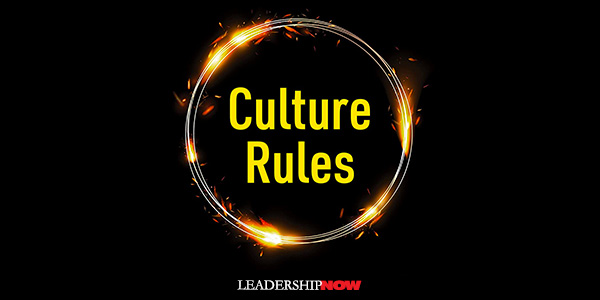
BUILDING a high-performance culture is like setting the rules of a game, says Mark Miller in Culture Rules: The Leader’s Guide to Creating the Ultimate Competitive Advantage. If you don’t “play” the organization will make up their own rules which can and will have unintended consequences. Culture is “a place, physical or virtual, where you set the parameters in which people work. A place where the organization established the rules of conduct and its values, how the game will be played, the options and variables to play, the desired activities and boundaries that govern the game, and more.” In the game of Culture, Miller offers three rules but says there are infinite moves you can make. There are an infinite number of ways to get it done when we think about how we want to shape and build the culture of our organization. You will find many examples others have used in building their culture. Rule #1: Aspire To aspire, you need to create more than a catchy statement. You need a clear purpose. Why does your organization exist? What do you aspire to? What do you value? You must know exactly what you are trying to create. When there is a gap between where you are and where you aspire to be, closing the gap moves you forward. Leaders must constantly share, reinforce, and celebrate their values, as well as challenge those who fail to uphold them. Leaders determine the value and impact of core values in an organization. Rule #2: Amplify Once you have clarity on your aspirations, you amplify them by continuously reinforcing them. “A message not heard consistently is a message without impact.” It’s important to recognize the power of mundane moments, the seemingly trivial actions, and the ordinary encounters. These mark our leadership. These moments happen all day, every day. Without thoughtful actions on our part, these opportunities will be wasted, missed, or worse. If we respond in a fashion contrary to our Aspiration, we can unwittingly undermine our efforts to create the culture we’ve been dreaming of. Rule #3: Adapt Success today is no guarantee of success tomorrow. The world changes, so there must be an ongoing effort to measure and improve the culture. “When leaders are willing to Adapt, not react, to a changing world, they can build or rebuild a High Performance Culture.” Adapting your culture requires continuous listening, learning, and changing. Miller reminds us that the “greatest obstacle to creating a High Performance Culture is a lack of focused attention.” Without the attention, a culture will degrade and succumb to indifference, paranoia, mistrust, counter cultures, and self-deception, to name a few. If people came to your organization because of what they could do and then stayed because of who they could become, I think you would be well on your way to creating your own High Performance Culture—a place known for its unity; life-giving, sold-enriching work; and elite levels of performance. 
Posted by Michael McKinney at 06:37 AM
03.16.23

Leading Thoughts for March 16, 2023
IDEAS shared have the power to expand perspectives, change thinking, and move lives. Here are two ideas for the curious mind to engage with: Ritch Eich on natural born leaders: “Too often we hear things such as ‘he (or she) is a natural-born leader.’ A person may, indeed, have the make-up, temperament, patience, and vision to lead, but without the right attitude, experience, approach, and training, that individual’s ‘knack’ for leadership doesn’t translate into real leadership.” NFL Offensive tackle Rayfield Wright on leading our youth: “Parents, teach your children well. Encourage them with your faith and leadership. Remember that you are the windows through which your children see this world. Take notice of yourself and the things that you do in hopes that your example will stir their hearts and souls.” Source: Speech, Don’t Be Afraid to Travel the Road Less Traveled, August 5, 2006, NFL Hall of Fame Induction Ceremony Look for these ideas every Thursday on the Leading Blog. Find more ideas on the LeadingThoughts index.
Posted by Michael McKinney at 09:12 AM
03.13.23

Decision Making is Not What You Think
HOW TO find a spouse? We all know how to make important decisions. First we diagnose (figure out what the problem is), next we design (identify possible solutions), then we decide (evaluate each, and choose the best), and finally we do (carry that choice into action). In other words, we think in order to act. I call this thinking first. Finding your spouse was probably the most important decision you made in your life. Did you think first: made a list of what you were looking for — say, brilliant, beautiful, and bashful; or strong, sexy, and steadfast — then list all the possible candidates, analyze their score on each of these criteria, add up all the scores to find out who won, and inform the lucky person? The problem is that your chosen is likely to have replied: “While you were going through this rigamarole, I got married and had two kids.” Thinking first does have its drawbacks. If this is how you proceeded, you’re probably still single (unless you’re Indian — it often works in India, but with the family doing the thinking). So maybe you proceeded differently, like my father, who announced to my grandmother: “Today I met the woman I’m going to marry!” There was not a lot of analysis in this decision, I assure you, but it worked out well. A long and happy marriage ensued. This is known as “love at first sight.” As a model of decision making, I call it seeing first. Even some rather formal decisions happen this way. For example, some might buy a car because they like the looks of it. Others might even buy a company upon first sight. These aren’t necessarily whims; they can be insights. But there’s another, sometimes more sensible way to make decisions. We don’t think in order to do, we do in order to think. Hence, I call it doing first. Not being sure how to proceed in the affairs of love, or what might make a suitable spouse, we meet someone and try living together to find out how that works. If it does, we continue. We may even get married. If not, we try someone else. Start small to learn big. In business, this could apply when thinking of raising your prices. You start with some test market. If that doesn’t work, you re-engineer your product to lower its cost. This too has its drawbacks. As described by Terry Connolly, a professor of decision making, “Nuclear wars and childbearing decisions are poor settings for a strategy of ‘try a little one and see how it goes.’” No doubt! But there are a lot of other decisions for which this proves to be a perfectly acceptable course of action. IKEA came up with its strategy of selling its furniture unassembled after a worker had to take the legs off a table in order to get it in his car. “If we have to do this, what about our customers?” Rest assured that IKEA must have tried this on a few items before it changed to its “assembly required” line of products. These days, there’s a lot more seeing first and doing first than you might think, and not only in the world of romance. Look for it in every business, government, and NGO. For example, to hire a new employee, we can, of course, go through the whole process of diagnosing and designing and deciding. Or we can just interview some likely candidates and pick the first one who just seems right — decision at first sight — trusting our intuition. Or, if we’re not sure, we hire one on contract for a few months to see how they work out. We learn from doing. Of course, just as thinking first can be tricky, so too can seeing first. We might not see past the surface. As for doing first, think about, not only having a baby or starting a nuclear war, but also wherever other small engagement can result in an irreversible commitment from employing this tactic. Think, See, Do. All are necessary in the world of decision making. Sometimes one, sometimes another, sometimes together, but not necessarily in that same order.  
Posted by Michael McKinney at 07:14 AM
03.10.23

Burn the Boats: Toss Plan B Overboard and Unleash Your Full Potential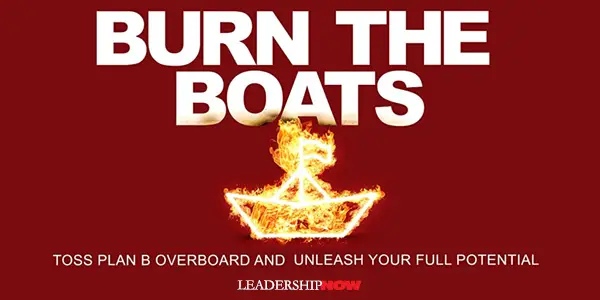
IF you’re looking to expand your thinking, then look no further than Burn the Boats: Toss Plan B Overboard and Unleash Your Full Potential by Matt Higgins. For those of us that have always heard, “Always have a Plan B,” burning the boats may sound reckless. What Higgins is saying is that “you don’t win when you give yourself the option to lose.” Should you process risk? Absolutely. Ask yourself, “What is the worst that could possibly happen?” If that is survivable, then burn the boats. To accomplish something great, you have to give yourself no escape route, no chance to turn back. You throw away your backup plans and you push forward, no longer bogged down by the infinite ways in which we hedge our own success. Essentially it comes down to: why do we hesitate? Burn the boats is about overcoming that voice in your head that holds you back—creates doubt. It’s easy to think that you’re not good enough regardless of what you have achieved or where you are at. “Before we can burn the boats, we have to be confident in who we are, unafraid of being felled by the forces gunning for our demise.” You’ll always have detractors. They can be useful as to where you’ll find resistance. They are often negative because they lack knowledge about what you are doing. They are envious because your success makes them look bad in their mind. Then again, we allow our insecurities and negative self-talk to tear us down before we even get started. Our weaknesses and shame can be our strength. “Whatever you worry is holding you back is just part of your story. Everyone has parts of their story that they ruminate about, hide from the world, or feel embarrassed to discuss. But once you realize that we all hold those kinds of secrets inside, their power over you diminishes.” What are you carrying around—the things in your life that you revisit over and over—that could make you lighter if you would reframe it and shed it? Leaning into your differences—those things that make you unique—will help you to not hedge your bets. Researchers at the Wharton School of the University of Pennsylvania found that the mere contemplation of a Plan B diminished the team’s performance and motivation. “You can’t waste your mental energy looking for a way out or an alternative plan. All of your energy needs to be directed toward your goal or you’ll never reach it.” There are behaviors and thinking that strongly influence our outcomes. Wrong partners can derail you. And sometimes, you are not the one to lead the company forward. Maybe you are the Visionary, and you need a good operator—a Catalyst type—to make it happen. When you want to quit on an idea, you have to ask yourself, is it the idea I’m bored with, or is it really time to bail? “Familiarity breeds contempt. We get burned out and sick and tired of hearing our own stories, even if most of the world hasn’t come close to hearing them yet. You need to structure your big bets in life to give yourself time to be right.” And you should place big bets, not incremental ones just to play it safe. “If it’s worth going in at all, then I would make the case that it’s worth going all in.” When we get scared, we want to slow down and take small steps instead of big leaps. “But all that does is extend our journey and give us more and more opportunity to turn back.” The notion of incremental progress is just our attempt to impose order onto the chaos of life and reduce success to some kind of discernable formula. Pay your dues and you’ll be rewarded with upward mobility. In reality, the greatest spoils usually go to the ones who refuse to submit to a typical roadmap. To make those big leaps, Higgins says, “find people who re better than you at everything one could possibly need to do, and submit to what makes them incredible.” Through the examples of people who had to cross that barrier of doubt and fully commit to their potential, you will find parallels to your own experience. It’s all here on the pages of Burn the Boats. I think every anxiety, fear, crisis, or doubt you might experience is found in the many examples Higgins shares. When we see ourselves in their life stories, we get the feeling that if they did it, we can too. 
Posted by Michael McKinney at 07:01 AM
03.09.23

Leading Thoughts for March 9, 2023
IDEAS shared have the power to expand perspectives, change thinking, and move lives. Here are two ideas for the curious mind to engage with: Matt Higgins on why you need to go all in: “Backup plans can make you feel safer and help you cope with uncertainty, but they also reduce the likelihood that your primary goal will ever be achieved. The mere act of contemplating a Plan B sets in motion a feedback loop that dramatically lessens the probability that Plan A will come to fruition. You spend too much of your emotional energy on contingency planning instead of on success.” Source: Burn the Boats: Toss Plan B Overboard and Unleash Your Full Potential Robert E. Quinn on the courage to change ourselves: “One key to successful leadership is continuous personal change. Personal change is a reflection of our inner growth and empowerment. Personal change is the way to avoid slow death. When we are continually growing, we have an internal sense of meaning and impact. We are full of energy and radiate a successful demeanor. To have such feelings in a continually changing environment, we must continually realign ourselves with our environment.” Source: Deep Change: Discovering the Leader Within Look for these ideas every Thursday on the Leading Blog. Find more ideas on the LeadingThoughts index.
Posted by Michael McKinney at 06:48 AM
03.06.23

Good Power: Changing a Life. Changing Work. Changing the World.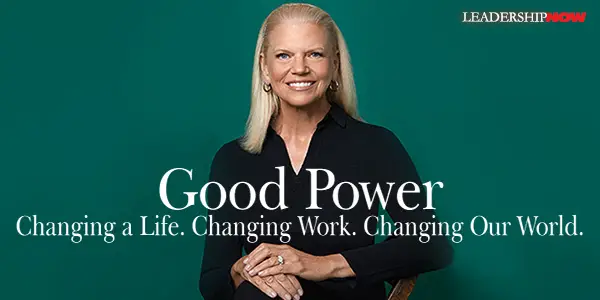
THE TIME TO THINK about power is before you get it. Power is part of leadership, and it can be used in the service of others or for personal gain. In Good Power: Leading Positive Change in Our Lives, Work, and World, former Chairman and CEO of IBM Ginni Rometty redefines power as a way to “drive meaningful change in positive ways for ourselves, our organizations, and for the many, not just the few.” Using her life experiences and lessons learned, she draws out principles that define good power. She observes that power that doesn’t produce tangible results is pointless. “Power is necessary to change things for the better, and that power can be good when it’s wielded respectfully, when it navigates tensions, and when it strives for progress over one person’s idea of perfection.” Rometty divides the book into three parts that correspond with our own journey as we grow into adulthood: the power to change me, the power to change we (a group or organization), and the power to change us as a society. She says that while some clients appreciated her perfectionist tendencies, it sometimes left her colleagues cold. “My drive for perfection often meant I only focused on what needed to change without acknowledging the positive. This could keep people from trusting themselves. It would take me a while to learn that just because I could point something out didn’t mean I should.” The soul of good power is “being in service of others,” which she differentiates from the act of “serving others.” Being in service of others is not a means to an end, but a means in and of itself. It manifests in how we act and the behaviors we choose in moments of preparation, interaction, and follow-up. Being in service of others means delivering value, which involves self-control and empathy—understanding who you are serving. Listening is a big part of that. I discovered that listening breeds knowledge, knowledge breeds creditability, and credibility earns trust that allows relationships to flourish. And when delivering bad news, use a velvet hammer. How do we do that? Speaking about tough truths in affirmative tones let critiques land constructively. So did beginning a difficult conversation by emphasizing something positive, as well as citing facts instead of opinion to support a controversial conclusion, and ending on a note of optimism and with potential solutions. When we move beyond just developing ourselves to developing others, it signals that we are transitioning from the power of me to the power of we. We grow a company when we grow its people. Being in service of others is the why and building belief is the how for bringing people on a change journey, she writes. Building belief is about moving people to embrace an alternate reality for themselves and others, and then to willingly participate in creating it. It’s the first major step if you want people to change, because they have to understand and believe in the change. When CEO Sam Palmisano stepped down at the end of 2011, there were several qualified replacements, including Rometty. The senior vice president of human resources told her, “ Ginni, if you want the opportunity to be CEO of IBM, don’t try to run for office. She says, “I translated his sage advice to mean put your focus on followership, not politics.” One of the best chapters for me was Knowing What Must Change, What Must Endure. If we want to make changes for me or the we, we must understand that certain behaviors are required to bring about certain outcomes. New thinking brings about new behavior resulting in different outcomes. We must give people the tools—the how—to change. When moments of reinvention arrive, innovating the “how” can be overlooked in favor of focusing on the “what.” Indeed it is not enough to just tell people to deliver a different outcome. We have to cocreate a new way of working, give people permission to change, and create an environment that encourages and rewards new behaviors and skills—all at scale. In any transformation, balancing the old and new is always a challenge because it is hard for people to wrestle with this tension. Even with major changes, some things don’t change. “Transforming a really large entity also means reconciling the pace of change in the market with the rate and pace of change the organization can withstand.” In addition, “once we figure out what endures, even if it must be modernized, we have a platform from which we can bridge to the future.” What doesn’t change? If an organization is to meet the challenges of a changing world, it must be prepared to change everything about itself except the beliefs on which it bases all its policies and actions. What is your foundation “upon which the hurricane of change” can happen? When there are setbacks and critics, you need to have built some resilience. Resilience results from a number of factors, but two in particular—relationships and attitude. Both are under our control. Rometty doesn’t ignore critics. She asks herself if they have legitimate points and anything she might learn from their perspective. “Critics may inform me, but they don’t define me.” To help us in applying good power to the us—society—one way is to look “at big problems as big systems to be transformed.” Thinking systematically, “good power at scale can help build belief in a movement; cocreate new solutions; let go of what’s wrong; and modernize what’s right.” 
Posted by Michael McKinney at 06:53 AM
03.03.23

The Shortcut
BECOMING teachable and action-oriented clears the way for success. It also sets the stage for The Shortcut by four-time luge Olympian Ruben Gonzalez. The Shortcut is a business fable full of critical life principles. It is the story of the arrogant and underperforming regional director Johnny Valentine who is on the verge of losing his job. Wanting him to succeed, his boss directs him to the Olympian Café. The old-world Olympian Café is a place designed around the sharing of timeless wisdom and life-changing conversation. It is here that Johnny meets his mentor, RG. Through a series of conversations, he begins to lay the foundations for success beginning with curiosity (“Always be green and growing.”) and advises him to “find the right leader—someone who has done what you want to do and follow the leader right away, get started, and don’t quit (“If you have to cross a minefield, it makes sense to follow someone who’s already crossed it.”).” Remember, action produces confidence. Inaction strengthens fear. Every time you take a risk, you expand your comfort zone. Always do the thing that scares you most. All the best things in life are on the other side of that fear. Don’t be afraid of not knowing. Johnny asks a successful colleague to help lead him out of his old thinking. Through his visits with RG at the Olympian Café, Johnny meets a series of people that share their journeys and the lessons they learned. Your dream has to become an obsession, or when difficulties arise, you will quit. RG tells him, “When there’s hope in the future, there’s power in the present.” There can be miracles if you believe and if you’re willing to take massive action. But you have to be willing to go through the struggle if you want to taste the sweet taste of victory. I see people everywhere seeking to live balanced lives. What they don’t realize is that the only way to move up to another level, the only way to achieve their dreams, is to get temporarily unbalanced. You have to temporarily give things up to get to the next level. The faster you want to progress, the more unbalanced you need to get. That’s the shortcut to success.

Posted by Michael McKinney at 06:50 AM
03.02.23

Leading Thoughts for March 2, 2023
IDEAS shared have the power to expand perspectives, change thinking, and move lives. Here are two ideas for the curious mind to engage with: Former IBM Chairman and CEO Ginni Rometty on the challenge of changing a culture: “When moments of reinvention arrive, innovating the how can be overlooked in favor of focusing on the what. Indeed, it’s not enough to just tell people to deliver a different outcome. We have to cocreate a new way of working, give people permission to change, and create an environment that encourages and rewards new behaviors and skills—all at scale.” Source: Good Power: Leading Positive Change in Our Lives, Work, and World Fortune 50 technology and business leader Daphne Jones explaining why purpose is the combination of passion and capability: “Purpose is the combination of one’s passion and capability. Purpose is basically the reason you exist. The simple way I define a person’s purpose is by understanding what that person loves and has a natural inclination or capability to do. If you have a passion for a certain vocation, but you don’t have the natural instinct or capability to learn and do it well, that is not your purpose. If you have a capability but you aren’t interested in exploiting or using it to a meaningful end, that is not your purpose. Only when those two aspects exist at the same time does your purpose get rendered.” Source: Win When They Say You Won't: Break Through Barriers and Keep Leveling Up Your Success Look for these ideas every Thursday on the Leading Blog. Find more ideas on the LeadingThoughts index.
Posted by Michael McKinney at 09:15 AM
03.01.23

First Look: Leadership Books for March 2023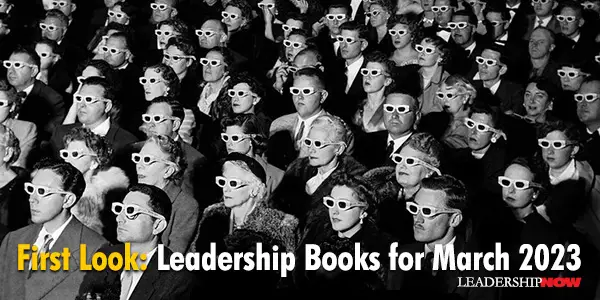
HERE'S A LOOK at some of the best leadership books to be released in March 2023 curated just for you. Be sure to check out the other great titles being offered this month.
We constantly encounter complex problems at home, in our places of work, and in society at large. Even if we had all the time and money in the world, sometimes no good solution can be found. So, what should we do, especially when we can’t wait? The answer: a workaround. The Four Workarounds shows how seemingly intractable problems―from public urination to the challenges of delivering lifesaving medicine to remote communities―were addressed using unconventional tactics. Some of the world’s biggest and most admired companies are already using Savaget’s research to transform the ways they do business. And these same lessons can also revolutionize the ways we approach the challenges we all encounter every day of our lives.
How can you overcome fear or ineffectiveness as a speaker? Learn the Laws of Communication! In The 16 Undeniable Laws of Communication, John C. Maxwell shares everything he’s learned from a lifetime of communication. Learn how to: Speak from conviction, Prepare your content and yourself for speaking, Find and use your personal and communication strengths, Focus on your audience and connect, Tell better stories, Read the room and create energy and anticipation, Add value to people, and Inspire people to take action
Culture Rules is a clarion call for leaders around the world. The pandemic has magnified the essential role that culture plays in an organization’s health, vitality, and sustainability—some passed the test with flying colors while others are seeing with fresh eyes, deeply rooted issues and challenges within their culture. Most important, this book is not just another compilation of case studies. Culture Rules makes the case for why leaders should invest their time and energy on building culture and gives them three simple, actionable rules they must play by if they want to stay in the game and win!
Former IBM CEO Ginni Rometty recounts in Good Power, her groundbreaking path from a challenging childhood to becoming the CEO of IBM and one of the world's most influential business leaders. With candor and depth, Rometty shares milestones from her life and career while redefining power as a way to drive meaningful change in positive ways for ourselves, our organizations, and for the many, not just the few—a concept she calls "good power." Rometty's "memoir with purpose" combines the experiences that defined her life—personal hurdles, high-stakes decisions, passionate advocacy—with the actionable advice of a coaching session to highlight lessons that shape authentic leadership. Behind-the-scenes stories and practical guidance offer us a blueprint for how we can all use good power to advance our careers, inspire our teams, improve our companies, and create healthier societies.
Incentives send powerful signals that aim to influence behavior. But often there is a conflict between what we say and what we do in response to these incentives. The result: mixed signals. Consider the CEO who urges teamwork but designs incentives for individual success, who invites innovation but punishes failure, who emphasizes quality but pays for quantity. Employing real-world scenarios just like this to illustrate this everyday phenomenon, behavioral economist Uri Gneezy explains why incentives often fail and demonstrates how the right incentives can change behavior by aligning with signals for better results.
Marketing professor at the Wharton School of the University of Pennsylvania, Jonah Berger’s cutting-edge research reveals how six types of words can increase your impact in every area of life: from persuading others and building stronger relationships, to boosting creativity and motivating teams. Almost everything we do involves words. Words are how we persuade, communicate, and connect. They’re how leaders lead, salespeople sell, and parents parent. They’re how teachers teach, policymakers govern, and doctors explain. Even our private thoughts rely on language. But certain words are more impactful than others. They’re better at changing minds, engaging audiences, and driving action. What are these magic words, and how can we take advantage of their power?
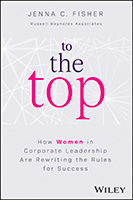 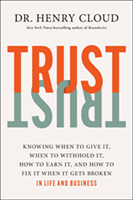 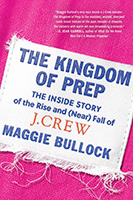 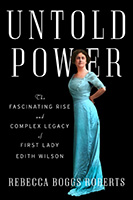
“A library is not a luxury but one of the necessities of life.” — Henry Ward Beecher
Posted by Michael McKinney at 07:33 AM
|
BUILD YOUR KNOWLEDGE


How to Do Your Start-Up Right STRAIGHT TALK FOR START-UPS 
Grow Your Leadership Skills NEW AND UPCOMING LEADERSHIP BOOKS 
Leadership Minute BITE-SIZE CONCEPTS YOU CAN CHEW ON 
Classic Leadership Books BOOKS TO READ BEFORE YOU LEAD |
|